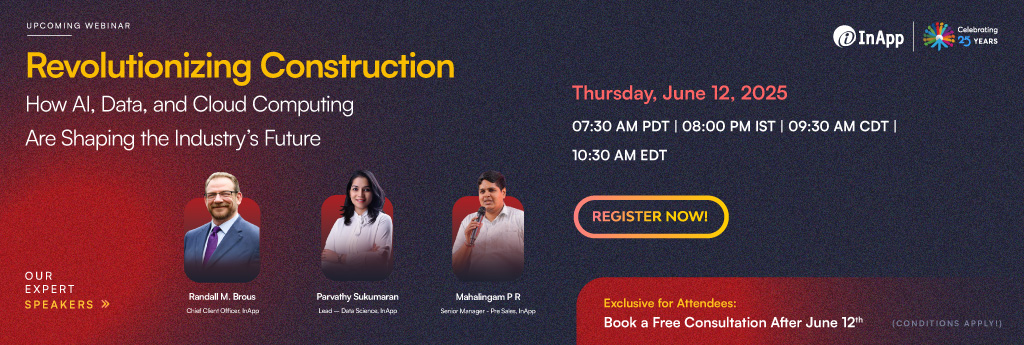Complete Transcript
Welcome to InApp Podcast, where we dive into the latest technology and innovation. I’m your host, Betsy Bernard, and today we’re exploring a topic transforming the software development world: Generative AI. Specifically, we’ll be looking at how AI is automating code generation and testing, and what this means for developers like you.
Generative AI is not just a buzzword—it’s actively reshaping how we approach coding and testing. In this episode, we’ll break down what generative AI is, how it’s used in software development, and the implications for the future of coding. So, let’s get started!
Segment 1: Understanding Generative AI
Let’s clarify what we mean by generative AI. At its core, generative AI refers to systems that can generate content, whether it’s text, images, or even code, based on patterns learned from existing data. Unlike traditional AI, which might categorize or recognize patterns, generative AI creates new content from scratch.
Generative AI typically involves machine learning models like GPT-4 or Codex in software development. These models are trained on vast amounts of code and programming knowledge, enabling them to understand and generate code based on natural language inputs or code snippets.
Generative AI is revolutionizing software development by streamlining processes that once required significant manual effort. For instance, these AI models can generate boilerplate code, suggest code completions, and even identify bugs or vulnerabilities in real time. This not only accelerates development cycles but also enhances accuracy and efficiency.
Segment 2: Automating Code Generation
Now, let’s dive into one of the most exciting applications of generative AI: code generation. Generative AI can write code by interpreting natural language descriptions or by learning from vast codebases. You can describe what you need in plain English, and the AI generates the corresponding code, bridging the gap between human intent and machine execution.
Tools like Copilot and TabNine illustrate this potential. Copilot uses AI to suggest code snippets and complete functions as you type, based on a rich understanding of your project’s context. Similarly, TabNine provides context-aware code completions, making coding faster and more intuitive. These tools aim to make coding more efficient and less prone to errors, significantly enhancing productivity.
The advantages are clear: Generative AI helps bypass tedious boilerplate code, enabling developers to focus on more complex and creative tasks. This acceleration in development reduces the time spent on routine coding and allows for quicker iteration and deployment.
Yet, there are challenges. Generative AI can occasionally produce inaccurate or inefficient code, which means developers must carefully review and refine AI-generated outputs. Ensuring that the code meets quality standards and integrates seamlessly with the existing project is crucial. For instance, many developers at companies like Microsoft have highlighted the significant time savings offered by GitHub Copilot but also stressed the importance of vetting AI-generated code to align with best practices and project requirements.

Segment 3: Automating Code Testing
Moving on to testing, a critical phase in the software development lifecycle. Testing ensures that code functions as expected and helps identify bugs before they impact production.
Generative AI is revolutionizing testing by automating the creation of test cases, and scenarios, and even generating test data. Tools like Testim utilize AI to create and manage test scripts, adapting to changes in the application automatically and continuously. This automation helps maintain test accuracy as the software evolves.
One major advantage is the enhancement of test coverage. AI can generate a wide range of test scenarios, including edge cases that developers might overlook. This comprehensive testing leads to more robust and reliable software by ensuring that unusual or unexpected conditions are also evaluated.
However, challenges remain. AI-generated test cases may sometimes be irrelevant or misaligned with the application’s specific needs. Integrating automated testing with manual testing is essential to ensure thorough coverage and accurate results. For example, while AI can handle a large volume of test cases quickly, manual testing can provide deeper insights and context that AI might miss.
Segment 4: Ethical Considerations and Future Directions
Before we wrap up, let’s address some crucial ethical considerations and explore where generative AI in software development might be headed.
The advent of AI tools in software development raises important questions about job displacement and the evolving role of developers. While AI excels at handling repetitive and routine tasks, it’s crucial to remember that the role of the developer is shifting rather than disappearing. Developers are increasingly focusing on oversight, strategy, and complex problem-solving. AI tools will handle more of the mundane aspects of coding, but human judgment and creativity will remain indispensable for addressing challenges and ensuring the ethical use of technology.
Another significant concern is the potential for biases in AI models. AI systems learn from data, and if that data contains biases, the generated code or test cases may reflect those biases. This can lead to unfair or unintended consequences in software applications. Developers and organizations must be vigilant about auditing and mitigating these biases to ensure equitable and inclusive technology.
Looking ahead, we anticipate that generative AI will become even more deeply integrated into development workflows. Future advancements in AI will likely bring about tools capable of handling increasingly complex coding and testing tasks with even greater accuracy and efficiency. We may see AI systems that not only automate routine tasks but also assist in more strategic aspects of software design and architecture.
In summary, generative AI holds tremendous promise for transforming software development, but it also brings challenges that require careful consideration. As we move forward, the key will be to leverage these tools thoughtfully, maintaining a balance between innovation and responsibility.
Conclusion
That’s a wrap for today’s episode on generative AI and its impact on code generation and testing. We’ve explored how these technologies are changing the landscape of software development, the benefits and challenges they bring, and what the future might hold.
Thank you for joining us on this episode of the InApp Podcast. Stay tuned for more insights into the intersection of technology and innovation!
